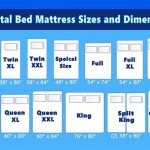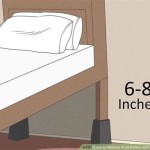Are Slat Beds Good?
Slat beds have become increasingly popular in recent years, offering a contemporary aesthetic and perceived health benefits. However, choosing a bed is a significant investment impacting sleep quality and overall well-being. This article examines the advantages and disadvantages of slat beds to provide readers with a comprehensive understanding of this bed type.
One primary advantage of slat beds is enhanced mattress breathability. Unlike solid bed bases, slats allow for increased airflow beneath the mattress. This ventilation helps dissipate heat and moisture, mitigating the growth of mold, mildew, and dust mites. Consequently, this can lead to a more hygienic sleep environment and can be particularly beneficial for individuals living in humid climates or those prone to night sweats.
Slatted bases can also contribute to improved mattress support. While the level of support depends on the slat spacing and material, properly configured slats offer a flexible yet firm foundation. They work in conjunction with the mattress to distribute body weight evenly, reducing pressure points and promoting spinal alignment. This can be particularly advantageous for individuals experiencing back pain or other musculoskeletal issues.
The inherent simplicity of slatted bed frames contributes to their ease of assembly. Most models require minimal tools and straightforward instructions, making setup relatively quick and convenient. This uncomplicated design also translates to a lighter, more manageable frame, simplifying moves and rearranging furniture within the bedroom.
Slat beds often present a more affordable option compared to other bed types, such as box springs or platform beds. This cost-effectiveness can be particularly appealing to budget-conscious consumers or those furnishing a new space. Furthermore, the minimalist design of slatted frames complements various décor styles, from modern and minimalist to traditional and rustic.
Despite these benefits, slat beds also have potential drawbacks. One key consideration is the potential for mattress wear. Depending on the slat spacing and mattress type, some mattresses might sag or develop indentations between the slats over time. Choosing a mattress specifically designed for slatted bases or opting for closer slat spacing can help mitigate this issue.
The firmness provided by slats can also be perceived as a disadvantage by some individuals. Those who prefer a softer, more plush sleep surface might find slat beds too firm, even with a comfortable mattress. This firmness can be accentuated with wider slat spacing, highlighting the importance of considering individual sleep preferences when selecting a slatted base.
Noise can be another concern with slatted beds. As the slats are individual pieces of wood, they can sometimes creak or rub against each other, particularly in older frames or those made with lower-quality materials. Choosing a well-constructed frame with sturdy slats and potentially adding padding between the slats can help minimize noise disruption.
The weight capacity of slat beds can also be a limiting factor. While many models can support average body weights, some may not be suitable for heavier individuals or couples. Checking the manufacturer's specifications regarding weight limits is crucial to ensure the bed's structural integrity and prevent premature wear and tear.
The lifespan of a slat bed can vary depending on the materials used and the quality of construction. Lower-quality wood slats might warp, crack, or break over time, necessitating replacement. Investing in a higher-quality frame made from durable materials such as solid wood can ensure greater longevity and a better return on investment.
Finally, the aesthetic appeal of slat beds might not suit all tastes. While many appreciate the minimalist and contemporary look, some might find the exposed slats visually unappealing or prefer the more traditional appearance of a box spring and bed skirt.
Selecting the appropriate mattress for a slat bed is paramount. Mattresses with flexible support cores, such as latex or some memory foam types, often perform well on slatted bases. Conversely, mattresses with rigid inner springs might not conform effectively to the slats, potentially leading to discomfort and reduced support. Consulting with mattress specialists and considering mattress types specifically designed for slatted frames is advised.
The spacing between slats also plays a crucial role in mattress support and longevity. Closer slat spacing typically provides better support and prevents mattresses from sagging between the slats. Wider spacing, while offering increased ventilation, can lead to mattress wear and discomfort if not paired with the appropriate mattress type. Checking the manufacturer's recommendations regarding slat spacing for different mattress types is essential.
In summary, slat beds offer numerous advantages, including enhanced breathability, improved support, ease of assembly, affordability, and a minimalist aesthetic. However, potential drawbacks such as mattress wear, firmness, noise, weight capacity, and lifespan should be considered. Carefully evaluating these factors and selecting a high-quality frame with appropriate slat spacing and a compatible mattress will help ensure a comfortable and supportive sleep experience.

Bed Slats Vs Plywood Which Is Best For Your Frame

Which Bed Slats Are Best

Bed Slats Woodworker S Journal How To

Bed Slats Vs Box Spring Which Is Better Dreamcloud

Are Sprung Slats Better Than Rigid Understanding Beds

What Are Bed Slats And How Do They Enhance Your Sleep

Are Bed Frames With Slats Better Or Those Platform Bases Picket Rail Custom Furniture Interiors

Full Size Bed Slats Enhance Your Mattress Support And Comfort

Are Bed Slats Bad For Mattresses

Sprung Beech Slats Information Natural Bed Company
Related Posts







